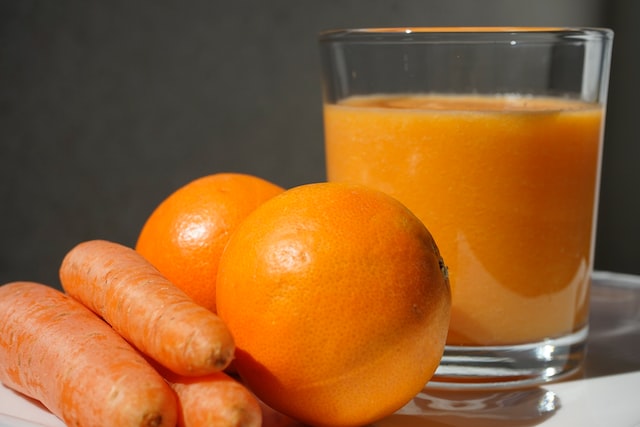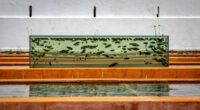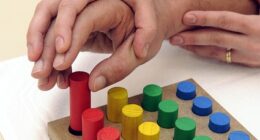An oxidant is a molecule or substance that causes oxidation, which involves the loss of electrons or the gain of oxygen. An antioxidant, on the other hand, is a molecule or substance that can prevent or slow down the oxidation of other molecules by neutralizing or donating electrons to free radicals.
What is an antioxidant?
(Photo by Vedrana Filipović on Unsplash )

An antioxidant is a molecule that inhibits the oxidation of other molecules. Oxidation is a chemical reaction that can produce free radicals, which are harmful to cells. Antioxidants neutralize free radicals and prevent them from causing damage to cells.
What is an oxidant?
An oxidant is a substance that causes oxidation, or the loss of electrons from an atom. Oxidation occurs when a molecule loses electrons and becomes more positive. When this happens, the molecule typically becomes more reactive and can damage cells. Antioxidants are substances that prevent oxidation by donating electrons to molecules that are about to be oxidized.
Antioxidants Vs. Oxidant – Key differences
An antioxidant is any molecule that can safely interact with and prevent the oxidation of another molecule. An oxidant, on the other hand, is a molecule that causes or promotes oxidation. So, in short, an antioxidant protects cells from damage while an oxidant damages cells.
There are many different types of antioxidants, but some of the most common include vitamins A, C, and E. These vitamins scavenge harmful molecules known as free radicals, which can damage DNA and lead to cell death. Free radicals are produced naturally in the body as a by-product of cellular metabolism, but they can also come from external sources like pollution and cigarette smoke.
While some free radicals are necessary for good health (they help kill bacteria and promote cell turnover), too many can cause oxidative stress, which has been linked to a host of chronic diseases like heart disease, cancer, and Alzheimer’s disease.
Antioxidants work by donating electrons to unstable free radicals, thereby neutralizing them before they can do damage. However, it’s important to note that not all antioxidants are created equal. Some are more potent than others, and some can actually become pro-oxidants if used in excess. This is why it’s important to get your antioxidants from a variety of sources – both food and supplements – and to avoid taking mega-doses of any one type.
The advantages and disadvantages of antioxidants
Advantages of antioxidants:
- Protection against oxidative stress: Antioxidants can help protect cells from damage caused by oxidative stress, which is a process that can contribute to the development of many diseases, including cancer, diabetes, and heart disease.
- Anti-aging effects: Antioxidants can help slow down the aging process by protecting cells from damage caused by free radicals, which are unstable molecules that can damage cells and contribute to aging.
- Immune system support: Antioxidants can help support a healthy immune system by protecting immune cells from damage caused by free radicals.
- Reduction in inflammation: Antioxidants can help reduce inflammation in the body, which is a key factor in many chronic diseases.
Disadvantages of antioxidants:
- Risk of overconsumption: Some studies have suggested that high doses of antioxidants may be harmful, as they can interfere with the body’s natural antioxidant systems and cause oxidative damage.
- Interference with cancer treatment: Some studies have suggested that taking antioxidant supplements may interfere with the effectiveness of chemotherapy and radiation therapy for cancer.
- Lack of regulation: Antioxidant supplements are not regulated by the FDA, and the quality and effectiveness of these supplements can vary widely.
- Conflicting research: There is conflicting research on the benefits and risks of antioxidants, and more research is needed to fully understand their effects on the body.
The advantages and disadvantages of oxidants
Advantages of oxidants:
- Essential for life: Oxygen, a common oxidant, is essential for life as it is required for the process of respiration, which generates energy for cells to function.
- Disinfection: Oxidants such as chlorine, hydrogen peroxide, and ozone are commonly used for disinfecting water and other surfaces, as they can kill bacteria, viruses, and other harmful microorganisms.
- Chemical reactions: Oxidation reactions are essential for many chemical processes, including the production of energy, the breakdown of food in the body, and the formation of new molecules.
Disadvantages of oxidants:
- Damage to cells: Oxidants can cause damage to cells and tissues through a process known as oxidative stress, which has been linked to many diseases including cancer, heart disease, and neurological disorders.
- Environmental pollution: Some oxidants, such as nitrogen oxides and sulfur dioxide, are major pollutants that can contribute to the formation of smog, acid rain, and other harmful environmental effects.
- Aging: Oxidation is thought to contribute to the aging process by damaging cells and tissues over time.
- Harmful effects on materials: Oxidants can also cause damage to materials over time, leading to degradation, discoloration, and loss of structural integrity. This can be a significant concern in many industries, including construction, transportation, and electronics.
The dangers of oxidants
When most people think of oxidation, they associate it with rusting metal or the browning of an apple. However, oxidation also occurs inside the human body at a cellular level. While some oxidation is normal and necessary for maintaining good health, too much oxidation can lead to cell damage and disease.
One way that cells become damaged is through the process of oxidative stress. This happens when there is an imbalance between the production of reactive oxygen species (ROS) and the body’s ability to detoxify or repair the damage caused by these ROS. ROS are chemically reactive molecules that contain oxygen and can damage cells by reacting with their DNA, proteins, and lipids.
While some amount of ROS production is necessary for good health, too much ROS production can cause cell damage. This can happen when there is an imbalance in the body between antioxidant levels and oxidant levels. Antioxidants help to neutralize free radicals and prevent cell damage, while oxidants promote cell damage.
There are many different factors that can contribute to an imbalance between antioxidant levels and oxidant levels in the body. Poor diet, environmental toxins, stress, smoking, and alcohol consumption are all examples of things that can lead to increased levels of oxidative stress in the body.
If left unchecked, oxidative stress can lead to a number of different health problems including heart disease, cancer, stroke, Alzheimer’s disease, and more. That’s why it’s so important to do everything you can to reduce your
What are examples for antioxidants?
(Photo by Tamanna Rumee on Unsplash )

Antioxidants are molecules that can prevent or slow down the oxidation of other molecules by neutralizing free radicals, which are highly reactive molecules that can damage cells and contribute to aging and disease. Examples of antioxidants include:
- Vitamin C: Also known as ascorbic acid, vitamin C is a water-soluble vitamin that is a powerful antioxidant and is essential for the synthesis of collagen, a structural protein in the body.
- Vitamin E: Vitamin E is a fat-soluble vitamin that is also a powerful antioxidant and is important for protecting cell membranes from oxidative damage.
- Carotenoids: Carotenoids are pigments that give fruits and vegetables their bright colors and are also antioxidants. Examples include beta-carotene, lycopene, and lutein.
- Flavonoids: Flavonoids are a group of plant compounds that are also antioxidants and are found in many fruits, vegetables, and teas. Examples include quercetin, epicatechin, and catechins.
- Selenium: Selenium is a mineral that is an essential component of some antioxidant enzymes in the body, such as glutathione peroxidase.
- Glutathione: Glutathione is a tripeptide antioxidant that is produced by the body and is important for detoxification and maintaining cellular health.
- Coenzyme Q10: Coenzyme Q10 is a molecule that is involved in energy production in the body and is also a powerful antioxidant.
- Resveratrol: Resveratrol is a polyphenol antioxidant found in grapes, red wine, and some berries that has been linked to various health benefits.
- Curcumin: Curcumin is a polyphenol antioxidant found in turmeric, a spice commonly used in Indian cuisine, and has been shown to have anti-inflammatory and antioxidant effects.
These are just a few examples of the many different types of antioxidants found in food and supplements.
What is the function of an oxidant?
An oxidant is a substance that causes or promotes oxidation. Oxidation is a chemical reaction in which electrons are transferred from one atom to another, resulting in the formation of new molecules. This process can be beneficial, as it can lead to the production of energy, but it can also be harmful, as it can damage cells and lead to disease.
What is the function of an antioxidant?
An antioxidant is a molecule that inhibits the oxidation of other molecules. Oxidation is a chemical reaction that can produce free radicals, which are atoms or molecules with unpaired electrons. Free radicals can start chain reactions that damage cells, so antioxidants can help prevent these reactions from happening.
Featured Image By – Photo by Kier in Sight on Unsplash








